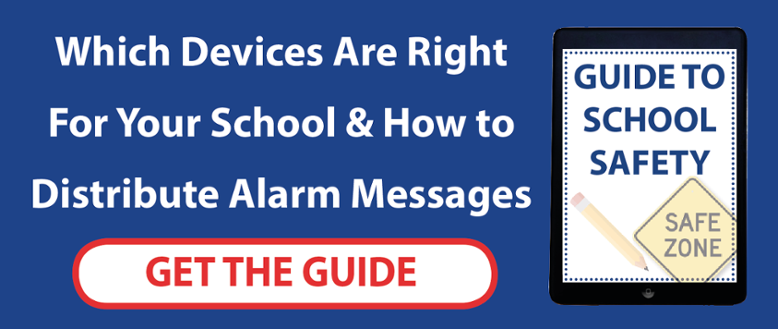
'Lone worker' is a term that often conjures forth images of people working in heavy industry, isolated sites miles from other humans or workers carrying out extremely hazardous jobs. However, the education sector is increasingly coming to recognise the fact that many of their staff should from a health and safety standpoint be considered as lone workers. This doesn't just go for technicians and maintenance personnel, but for teachers too, as they can often find themselves inadvertently placed in harm's way. Whilst NASWUT figures show accidents and attacks on teachers steadily increasing over recent years, there are some simple steps that can be taken to ameliorate the issue of staff being required to work long hours by themselves.
There are several main reasons why a teacher may require some form of lone worker protection. The most common reason is classroom violence. As threats towards teachers and actual attacks have risen over time, educators are increasingly having to be mindful of the risks that they may face from their own students. This is especially the case when dealing with pupils with significant behavioural problems or with special needs students. The other main source of concern is the need to for some academic staff to often be working in isolated environments, dealing with potentially dangerous materials or equipment (i.e. in laboratories, workshops or agricultural environments). It is here where the risk of a serious accident occurring is at its highest and where lone worker protection for teachers can make all the difference. Fortunately, by adopting a technology-driven approach, we can tackle these problems head-on.
The first and most basic form of lone worker protection is a mobile personal emergency response device (also called MPERS). These small, single-function devices can be easily worn and concealed by a teacher as they go about their workday. In the event of an emergency, the MPERS can be used as a 'panic button' of sorts, which when activated will raise an alarm on a centralised computer system and summon all nearby staff to their location. It has been found that these devices are at their most useful when faced with an aggressive pupil or intruder, as the discreet nature of the gadget allows the wearer to activate it without the other person's knowledge, giving them the opportunity to both summon help and try to de-escalate the situation before it gets out of hand.
Another great form of lone worker protection is the use of passive monitoring by dedicated smart devices to make sure that the employee is safe. This can be done by issuing them with an upgraded phone that whilst incorporating all the usual features of a smart device, is engineered to be extremely tough and through an app includes the ability to detect falls by recognizing that the handset is in an almost horizontal position. If such an event should occur, the device can prompt the worker to confirm that they are safe and sound. If no response is forthcoming after a preset period of time has elapsed, then the device can raise the alarm by itself.
Furthermore, many schools and universities have storage areas for potentially volatile chemicals for use in their science departments, as well as significant gas lines. If a spillage or leak occurs in such an area, accumulated fumes can be (and sometimes are) detonated by electronic devices. It is for this reason that smart devices have been developed which are totally sealed, meaning that they pose no risk to the user if used in a flammable atmosphere. These devices are specifically designed for use in the chemicals and petroleum industries and as such are fully compliant with ATEX legislation.
For schools looking to provide a high level of safety for their staff and students, a critical alarm management system can be used to take things to the next level. It functions as a centralised computer system that teachers can interact with by using a simple app installed on their smart devices. Using the app, they can raise alarms and receive relevant updates and notifications. Once an issue has been logged via the app, the system will assign it a priority and notify the relevant staff members in the space of just a few seconds. As the situation is dealt with, employees can update the system with fresh information so that people can stay updated. This functions as an upgrade to the school's existing procedures and infrastructure, giving them the ability to increase safety and lessen response times with minimal staff retraining needed.
Whilst many of these systems function using Wi-Fi and mobile phone networks, some schools and areas within them may be signal blind spots, effectively preventing 2G/LTE devices from communicating within them. For this reason, the above solutions are designed to work using radio technology as well. For larger sites or ones with even worse coverage, transceivers can be installed at key points to allow easy communication and access to safety systems from any point on the school property.
ANT provide solutions utilising all of the above products, drawing from their large amount of experience in providing safety support across multiple industries to enable schools to provide a truly comprehensive level of lone worker protection for teachers. All of these options are designed from the ground up to be simple bolt-on upgrades, which means that senior staff can mix and match amongst these solutions to find the best fit for their school's particular needs. Furthermore, many of these hardware and software packages can be used to tackle multiple safety issues (not just safeguarding lone workers), meaning that by investing wisely in modern technology, a school can dramatically increase its overall level of protection against whatever may come its way.





